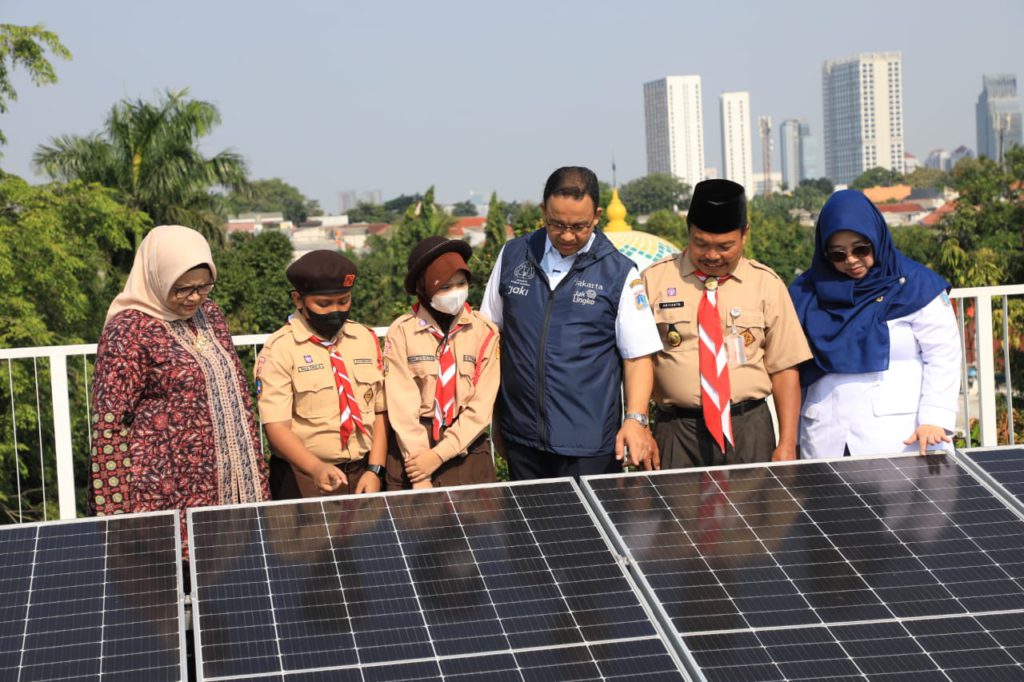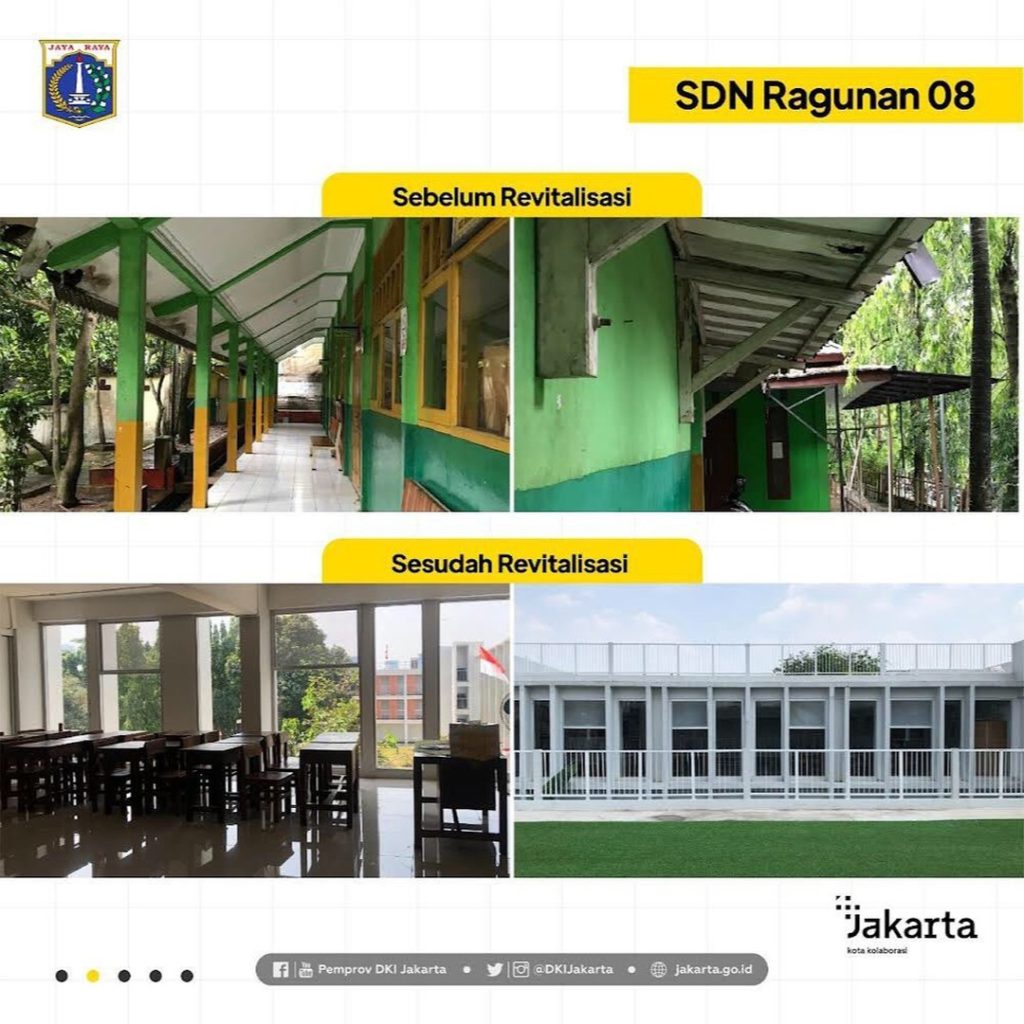Four public schools in Jakarta revitalised as pilot Net Zero buildings
5 OCTOBER 2022 – According to Jakarta governor Anies Baswedan, public schools make up the majority of building typologies owned by the Indonesian government. In the capital city alone, there are a total of 1,804 public schools to serve its school-age population, from primary level to high school—approximately 2.4 million children and youth or five per cent of all populace.
Before and after pictures of the school renovation. Images: DKI Jakarta Education Office
However, most public school buildings are built to follow a typical layout that maximises efficiency, with a lack of design intent towards Green principles.
As a step to fulfil climate commitments, the municipal government of Jakarta has revitalised and officiated four public schools as Net Zero Healthy pilot projects, certified by Green Building Council Indonesia (GBC Indonesia).
The officiating ceremony was conducted on 28 September 2022 at Ragunan Primary School (SDN Ragunan 08 Pagi, 09 Pagi, 11 Petang) in South Jakarta. Three other certified schools were Duren Sawit 14 Primary School; Grogol Selatan 09 Primary School; and 96 High School (SMAN 96).
Before and after pictures of the school renovation. Images: DKI Jakarta Education Office
Optimising passive strategies
The school revitalisation involved simulations and analyses by GBC Indonesia to implement passive design principles, namely airflow patterns on the site, solar radiation on the building envelope, and lighting simulations to determine the building’s performance and potential for energy reduction.
Through the simulations, designers could predict general wind direction and speed in order to position openings that maximize natural ventilation. Solar radiation simulation identifies parts that need extra shielding from sun exposure, which in turn greatly reduces the need for air-conditioning.
Natural lighting is another important consideration for schools as it directly contributes to children’s learning activities. To reduce energy usage of lamps, natural sunlight was utilised in a balance with interior thermal comfort.

Sunshading and deep balconies protect sides of buildings that receive direct sunlight 
Operable windows and large transparent surfaces ensure natural daylighting. Photos courtesy of DKI Jakarta Municipal Government
Health at the forefront
On GBC Indonesia’s website, the Net Zero Healthy certification is described as optimising “the design of the building in such a way that it can reduce the need for energy consumption per year as low as possible so that the energy supply can rely entirely on renewable energy (RE) systems.” Solar panels were installed in the schools as the main energy source.

Guidelines for healthy Green schools, from GBC Indonesia’s guide to healthy schools
Considering Indonesia’s tropical climate with alternating six-month dry and rainy seasons, the certification recommends natural ventilation to minimise energy consumption, alongside improving the microclimate to produce better thermal comfort and cleaner air. Moreover, the healthy building title prioritises an exchange of fresh air in rooms—something important for post-pandemic school activity.
The certification also requires total emission (calculated as carbon caused minus the carbon balance) of the building should also be less than or equal to zero. The carbon balance could come from on-site or off-site RE as well as carbon offset schemes, although the introductory document does not further explain what the latter entails.
Educating for Green
The government hopes that revitalising schools with a Green building strategy can become a direct educational medium for children, teachers and parents alike, exemplifying environmentally friendly buildings in accordance with Jakarta’s carbon targets.
“We want school buildings to inspire and stimulate students’ mind and imagination. They can learn, from these buildings, topics like electrical engineering, solar panels, pure physics and applied physics. The building systems actually become teaching tools,” explained Governor Anies.
In the future, rehabilitations of public school buildings in Jakarta are planned to implement Green building concepts in various degrees. This includes the use of energy-saving appliances, transitioning to RE with solar panels and waste water management.
Related stories:
Touch of Change: Writing New Memories Into Saigon’s ‘Frozen’ Peninsula

Bó Mon Preschool: A safe ‘station’ amidst the hills

HGAA’s Semi-Permanent Green Preschool

Read more stories from FuturArc 3Q 2022 Green Awards: Reinterpretation!



